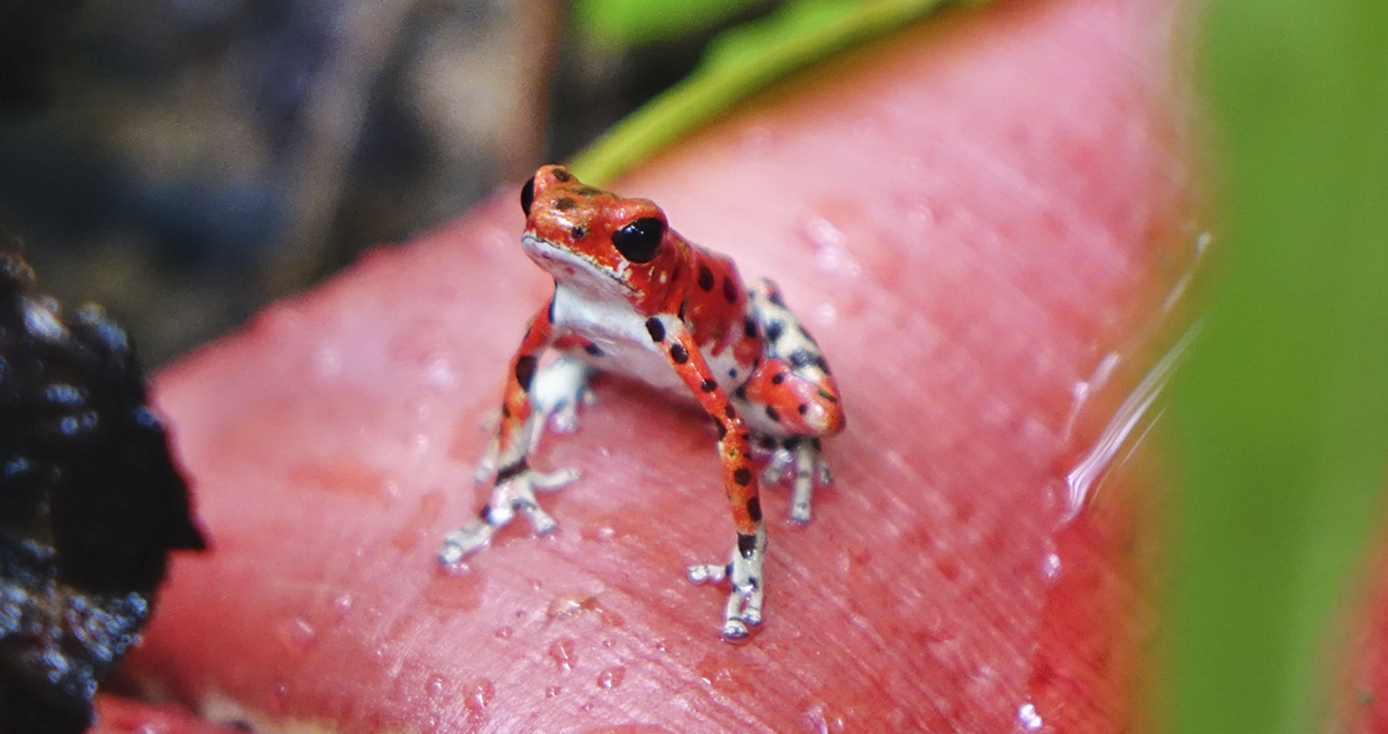
Subscribe to Pittwire Today
Get the most interesting and important stories from the University of Pittsburgh.Study Shows Sexual Selection Alone Could Spark Formation of Species
A new study by University of Pittsburgh researchers indicates animals that seek mates and fight rivals that resemble their parents could be setting the stage for the formation of a new species.
The study by Yusan Yang, a graduate student in the Richards-Zawacki Lab in the Department of Biological Sciences and associate professor Corinne Richards-Zawacki, examines behavioral imprinting — the phenomenon of offspring learning a parent’s appearance to choose future mates or distinguish rivals — in the strawberry poison frog (Oophaga pumilio).
Yang, Richards-Zawacki and coauthor Maria Servedio, a professor in the University of North Carolina Department of Biology, studied the frogs inside of a lab and in their natural habitats in the Bocas del Toro archipelago, a scattering of islands off the coast of Panama in the Caribbean Sea.
The Central American frog, which features a rainbow of color variations that range from bold neon greens and blues to fire-engine red or orange with a scattering of dark spots, provides ample opportunity for its offspring to study its appearance from an early age. Adult male frogs tend to the eggs before they are hatched and mother frogs raise their tadpoles by feeding them unfertilized eggs.
The team discovered this mother-offspring interaction influences the tadpoles’ behaviors in adulthood. As they mature, females grow up to prefer mates that have the same color as their mother, and males grow up to be more aggressive when their rival has the same color as their mother.
“Our results suggest that maternal imprinting may be the key mechanism that mediates the color-assortative behaviors that are seen among recently diverged color morphs of O. pumilio,” reads a portion of the paper, “Imprinting Sets the Stage for Speciation.” The study was published in Nature on Oct. 2.
The team developed a mathematical model to demonstrate how these imprinted behaviors can contribute to the formation of new species. Because of the imprinted preferences, females mate more with similar colored males and less with differently colored males, which, over time, could lead to two color types becoming separate species.
“Sexual selection is traditionally thought of as a strong driving force for the formation of new species. But several theoretical models have suggested it was not incredibly likely to do so without natural selection or geographic separation,” explained Yang.
“One of the reasons is because it is hard to maintain multiple mating types in the population. Usually, natural selection can serve the role, but our model suggests that imprinted male aggression can also do it. This means that with imprinting in both sexes, sexual selection on its own could potentially kick start speciation.”
The study was focused on amphibians, but the results could shed light on the evolution of many other animal species with imprinting and in general where new species come from.
“Speciation is a key process in biology that has led to the amazing diversity of species we see today. How that happens is a fundamental question in evolution and one we’ve been trying to answer since the time of Charles Darwin,” said Richards-Zawacki.



